Massage’s healing power has long been recognized as a nourishing force capable of relieving pain and restoring balance to the body. Neuromuscular Massage is an advanced form of massage therapy that uses specific techniques to target areas of tension to relieve pain and restore harmony in the body. Through this powerful treatment, individuals can experience profound physical relaxation and emotional well-being. This article will explore the benefits and techniques used in neuromuscular Massage, who can benefit from it, how to prepare for a session, and aftercare advice.
Key Takeaways
- Neuromuscular Massage is a form of soft tissue manipulation that relieves muscle tension and nerve pain.
- It improves posture, flexibility, and range of motion and has been used for centuries in many cultures.
- Neuromuscular massage treats and manages pain conditions promotes muscle relaxation, and improves circulation.
- It restores standard movement patterns, corrects imbalances in muscle tone, and promotes relaxation and improved circulation.
What Is Neuromuscular Massage?

Neuromuscular Massage is a form of soft tissue manipulation that involves applying pressure to specific points on the body. It can be used to relieve muscle tension and nerve pain, as well as improve posture, flexibility, and range of motion. This type of Massage has been used for centuries in many cultures worldwide to help restore balance to the body and mind. By targeting specific areas with gentle pressure, neuromuscular Massage can reduce stress levels and promote relaxation. Additionally, it offers relief from chronic pain and discomfort caused by medical conditions such as fibromyalgia or sciatica.
This specialized form of massage releases adhesions between muscles that have become tight due to repetitive use or injury. Through targeted deep-tissue techniques such as myofascial release, neuromuscular Massage helps reestablish an optimal balance in the muscles surrounding joints, providing improved mobility and stability. The therapist may also use trigger point therapy, which applies direct finger pressure at critical points along the body’s energy pathways, increasing blood flow while decreasing tension in tight muscles.
The power of neuromuscular Massage lies in its ability to provide a holistic approach to healing that is both refreshing and nurturing. It promotes physical well-being while supporting emotional health through its calming effects that encourage feelings of safety and belonging—an essential factor when dealing with chronic pain or illness. When done correctly, this specialized technique can bring about profound changes within the body, allowing individuals to reclaim their freedom from pain and live a life filled with joy rather than suffering.
Benefits of Neuromuscular Massage
Neuromuscular Massage is a therapeutic technique that has been used to effectively treat and manage a wide range of pain conditions, as well as improve mobility. It can benefit those seeking relief from muscle tension, as it helps promote muscle relaxation. Additionally, neuromuscular Massage improves circulation and reduces pain by targeting specific body areas affected by chronic tension. Lastly, neuromuscular Massage helps to restore standard movement patterns and enhance overall flexibility and range of motion.
Muscle Relaxation
Muscle relaxation is a crucial goal of neuromuscular Massage, easing tension and reducing pain. Through the use of deep pressure and targeted strokes, neuromuscular Massage can help to:
- Improve flexibility
- Reduce tension
- Increase range of motion
Neuromuscular Massage targets specific muscles and connects tissues to release tension and restore balance. This therapy helps relax contracted muscles, increase circulation, and reduce inflammation, enabling the body to heal naturally. Additionally, it can improve posture by helping to correct muscle imbalances caused by stress or injury. Neuromuscular Massage provides an effective way for individuals to feel better physically and emotionally, creating a sense of well-being that encourages belonging.
Pain Reduction
Targeted strokes employed in neuromuscular therapy can help to reduce pain and alleviate discomfort. Deep tissue massage helps access muscular layers below the skin’s surface, relieving chronic patterns of muscle tension. Applying pressure to deep areas can release knots and adhesions, resulting in improved mobility and reduced pain. Neuromuscular Massage is also beneficial for stress relief; it reduces cortisol levels while stimulating the production of endorphins that promote relaxation. As a holistic approach to healing, this type of massage restores balance through physical and emotional benefits. It provides an opportunity for self-care that helps individuals reconnect with their bodies and experience more profound comfort and well-being.
Improved Mobility
By applying pressure to deep areas of the body, improved mobility can be achieved by releasing knots and adhesions. Neuromuscular Massage is an effective tool to increase flexibility, restore balance, and improve posture. This type of Massage alleviates soft tissue restrictions, decreasing pain or discomfort and improving the range of motion. Practitioners use cross-fiber friction, myofascial release, trigger point therapy, and muscle energy techniques to improve mobility.
Regularly receiving this type of Massage can enhance flexibility and reduce the risk of injury due to increased strength in weakened muscles. A neuromuscular massage also helps relax tense muscles, which results in better circulation and improved overall health. By combining techniques with anatomy and proper body mechanics knowledge, practitioners can apply pressure effectively for maximum benefits. Neuromuscular massages help restore balance by working with the body’s natural ability to heal through movement and relaxation.
Techniques Used in Neuromuscular Massage
Neuromuscular Massage is a form of bodywork focused on relieving pain and restoring balance to the body. It uses specific techniques such as Trigger Point Therapy and Posture Alignment, which are beneficial for conditions such as muscle tension, headaches, and chronic pain. These techniques target trigger points in the body that must be released while addressing any postural imbalances contributing to discomfort.
Trigger Points
Muscular tissues can develop tension nodules, commonly called trigger points, which can be relieved through neuromuscular Massage. Trigger points cause localized pain and can also refer pain to other areas of the body. Neuromuscular massage techniques target these points with precision and provide the following:
- Stress relief
- Relief from chronic muscle tension
- Improved circulation
- Enhanced range of motion
- Tension release
Neuromuscular Massage is an effective tool for finding and treating trigger points in the body. It allows individuals to reduce discomfort, restore balance, and experience a sense of belongingness as they become aware of their bodies’ need for pain-free.
Posture Alignment
Correcting posture alignment through neuromuscular massage techniques can help improve overall physical functioning. Realignment exercises and spinal adjustments can strengthen weakened muscles, release tight connective tissue, and promote better posture. Neuromuscular Massage encourages the body to find its natural balance of tension throughout the musculoskeletal system, thus helping reduce chronic pain and discomfort. Through gentle manipulation of the joints and soft tissues, it is possible to restore proper structural alignment, which in turn helps improve mobility, flexibility, coordination, and strength. By correcting imbalances in muscle tone, neuromuscular Massage promotes relaxation and improved circulation, resulting in a feeling of well-being and belonging.
Who Can Benefit From Neuromuscular Massage?
Many individuals suffering from musculoskeletal dysfunctions may benefit from the therapeutic effects of neuromuscular Massage. From those suffering from acute injuries to individuals with chronic pain, neuromuscular Massage offers relief and improved balance, given its ability to:
Provide Pain Relief: Neuromuscular Massage helps reduce pain by breaking up muscle adhesions, increasing blood flow and circulation, and calming the nervous system. It also offers long-term relief for certain types of chronic pain.
Restore Balance: Neuromuscular Massage can be used to restore physical and mental balance through a combination of deep tissue manipulation techniques that release tension in the body.
These techniques can help improve posture, coordination, range of motion, and muscle strength while reducing stress levels.
Neuromuscular Massage benefits athletes recovering from an injury or looking to prevent future problems and those who experience poor posture due to work-related activities or everyday life routines. It is also great for people with anxiety or depression since it helps relax the mind and body while providing comfort and support during treatment sessions. Lastly, those who experience headaches caused by tension or pain in the neck may find relief through neuromuscular Massage as well.
Preparing for Neuromuscular Massage
Before undergoing neuromuscular Massage, individuals must take specific steps to ensure the best possible outcomes. This includes understanding the procedure and preparing physically and mentally. Beforehand, it would be helpful to talk about any medical conditions or other issues with your therapist so that they can tailor the Massage accordingly. It is also beneficial to clearly understand what areas will be targeted during the session.
Additionally, before beginning the Massage, ensuring you are adequately hydrated and nourished may be helpful. Doing light stretching exercises beforehand can help with soreness relief and stress relief throughout your body. It is also essential to wear comfortable clothing to access areas on your body where the Massage will be targeted. Finally, ensuring you are relaxed and comfortable is necessary for getting the most out of your session. Taking these steps before receiving a neuromuscular massage can help maximize its benefits while minimizing discomfort.
Aftercare for Neuromuscular Massage
Following a neuromuscular massage, certain steps may be taken to enhance the effects and reduce potential discomfort. Self-care tips that can help maintain long-term relief include:
- Hydration:
- Increase water intake to stay hydrated and help flush out toxins released during the Massage.
- Avoid diuretics like caffeine or alcohol for 24 hours after the session.
- Activity:
- Avoid strenuous activities for at least 24 hours after the Massage, allowing your muscles time to recover.
- Incorporate gentle stretching exercises into your routine to promote circulation and relaxation of muscles.
In addition to these self-care tips, it is also essential to listen to your body and take note of any areas that are sore or tender to identify potential imbalances or trigger points so they can be addressed in future sessions if necessary. This will help ensure maximum benefit from each session and maintain long-term relief over time. It is also beneficial to schedule regular sessions with your therapist as part of a comprehensive wellness plan.
Frequently Asked Questions
How Long Does a Typical Neuromuscular Massage Session Last?
The duration of a typical neuromuscular massage session depends on the individual’s needs and preferences. Generally, it may last anywhere from 30 minutes to an hour and a half. The therapist will focus on reducing muscle tension and acute pain during this time. They will use specific techniques such as myofascial release, trigger point therapy, or deep tissue massage tailored to their client’s needs for optimum results. Ultimately, the goal is to create a sense of relaxation while simultaneously restoring balance in the body through releasing tight muscles and relieving pain.
Are There Any Side Effects Associated With Neuromuscular Massage?
Neuromuscular Massage is a powerful tool for relieving pain and restoring balance, but it has specific benefits and risks. Generally speaking, short-term side effects of neuromuscular Massage can include soreness or sensitivity in the area where the Massage was administered. This usually subsides within 24-48 hours after the session. Some people may also experience more long-term effects, such as an increased risk of injury due to overuse or fatigue if they do not rest adequately between sessions. It is essential to talk about any potential risks with your healthcare provider before you begin neuromuscular massage therapy so that you can make an informed decision about whether it is right for you.
Is Neuromuscular Massage Suitable for Pregnant Women?
Though neuromuscular Massage can benefit many, pregnant women may want to consider alternative therapies with fewer risks. Put another way, the potential benefits of neuromuscular Massage outweigh the possible complications. It is important to note that pregnancy can cause additional aches and pains in the body due to increased weight and hormones, making relief from discomfort challenging to find. Therefore, pregnant women should consult their doctor before engaging in massage therapy. Compassionate healthcare providers are available to discuss individual concerns and provide guidance on what would best suit each unique situation.
Are There Any Contraindications to Neuromuscular Massage?
Yes, there are some contraindications to neuromuscular Massage. Trigger point therapy and myofascial release can be mild or intense depending on the situation and should be used cautiously with specific groups of people. People with recent surgery, fever, acute inflammation, active cancer, thrombosis, or blood clots should avoid trigger point therapy due to potential complications. In addition, pregnant women should only receive Massage from a qualified practitioner with experience in providing prenatal massage treatments. Finally, people with cardiac conditions such as congestive heart failure or arrhythmias may need to modify treatments for safety.
Does Health Insurance cover Neuromuscular Massage?
The cost of neuromuscular Massage can be a concern for those seeking relief from pain and restoring balance. Whether health insurance covers this treatment depends mainly on the provider and plan type. Coverage limits may apply, making it essential to understand the specifics of an individual’s healthcare plan. However, many find that due to its cost-effectiveness compared to other treatments, such as medication or physical therapy, neuromuscular Massage is increasingly accepted by insurance providers. By considering the coverage limits and discussing options with one’s provider, individuals may discover their journey toward wellness can be more accessible through health insurance coverage.
Conclusion
Neuromuscular massage therapy is also beneficial for athletes and active individuals as it can help to improve athletic performance. It can help improve muscular flexibility and strength, increase range of motion, and relieve delayed onset muscle soreness. Additionally, it can help promote proper posture and muscle alignment, improving the quality of life for individuals with musculoskeletal issues.
Neuromuscular Massage is a great way to reduce stress and tension in the body. By focusing on specific muscle fibers, it can release tension and improve circulation throughout the entire body. This can help to improve the range of motion, reduce fatigue, and improve the overall functioning and mobility of the body. Neuromuscular Massage can also help to reduce anxiety and improve sleep by promoting relaxation and calming the nervous system.
In conclusion, neuromuscular therapy can be a powerful tool for relieving pain, improving athletic performance, and promoting overall wellness. Targeting underlying causes of pain can help reduce discomfort, improve flexibility and range of motion, and enhance the quality of life. Moreover, it can help to reduce stress and tension in the body, promoting relaxation and calming the nervous system. Ultimately, neuromuscular Massage is a great way to reduce pain and restore balance to the body.

